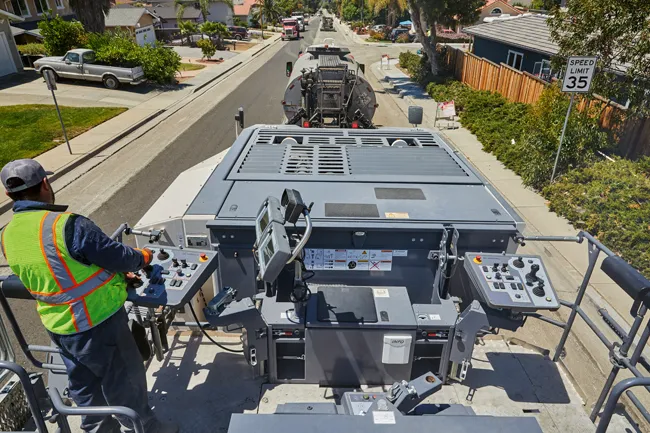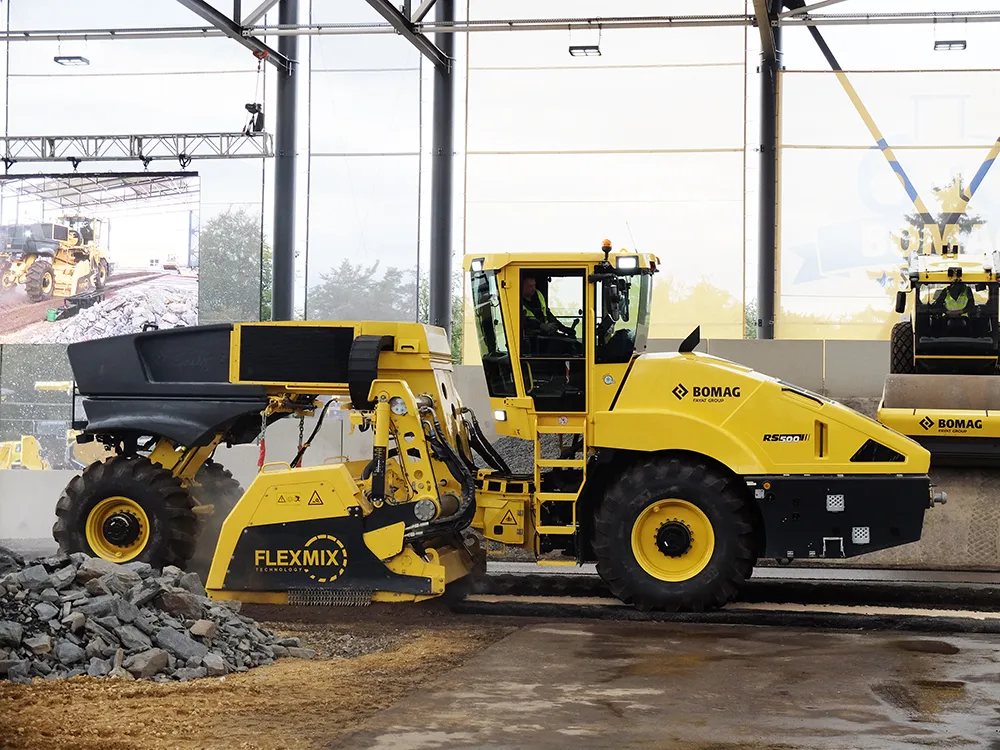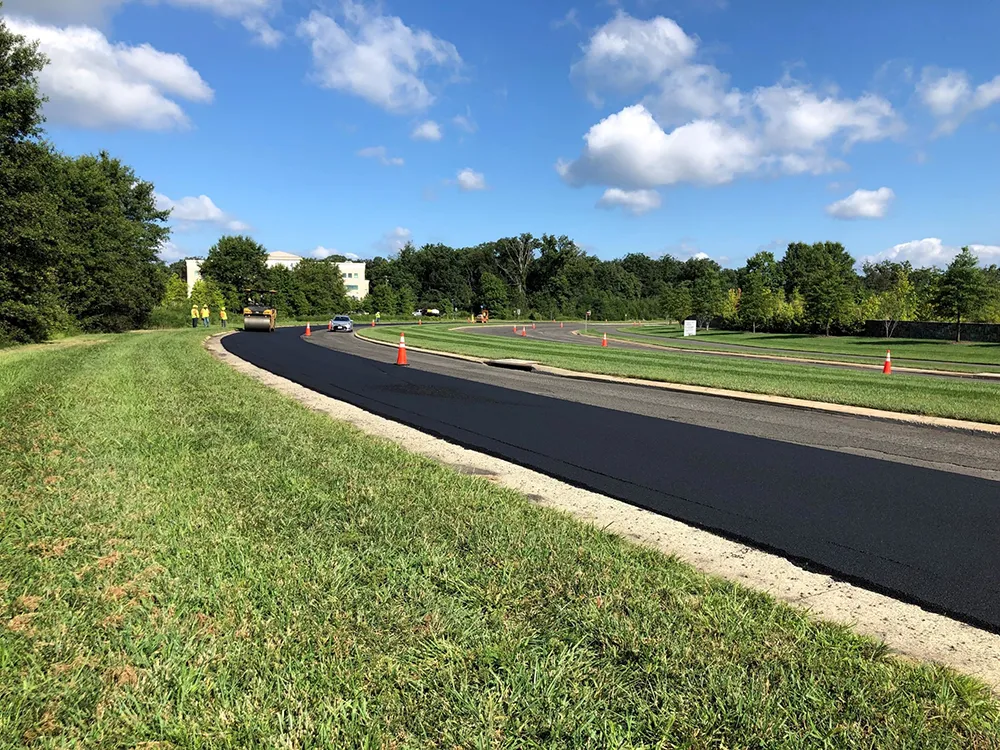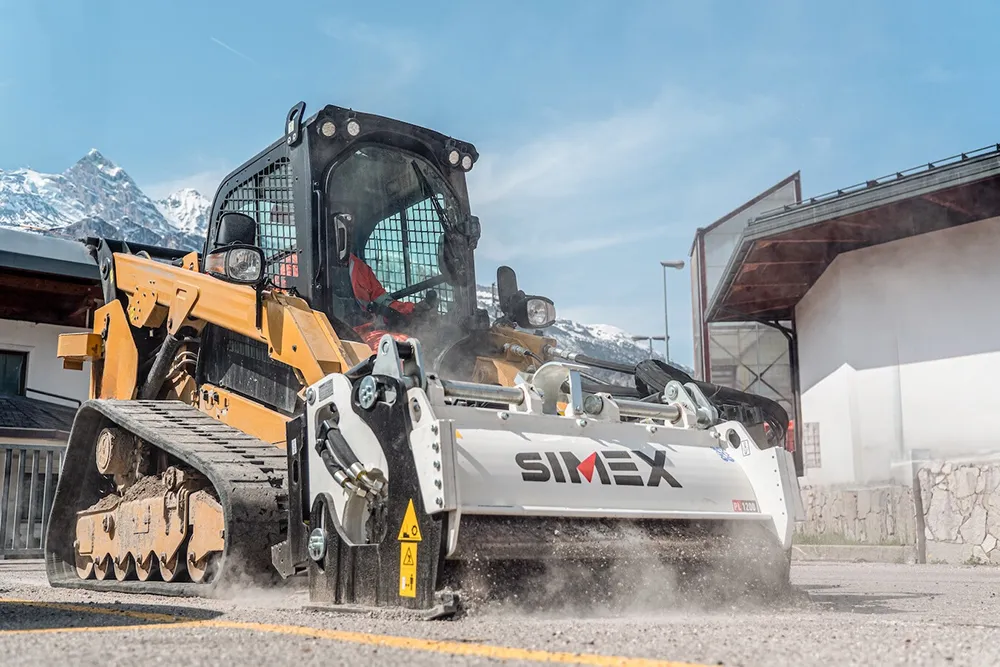
The widest cold planer range in the world
24 models of Simex road planers for widths from 250 to 2000 mm, up to 350 mm depth. With specific technical features that have made them recognizable on the market for reliability and longevity:
• First self-leveling system launched on the market
• Independent depth adjustment on the left and right sides
• Water tank integrated into the side shift
• Performer device to optimize results
• Removable slides with cutting indicators
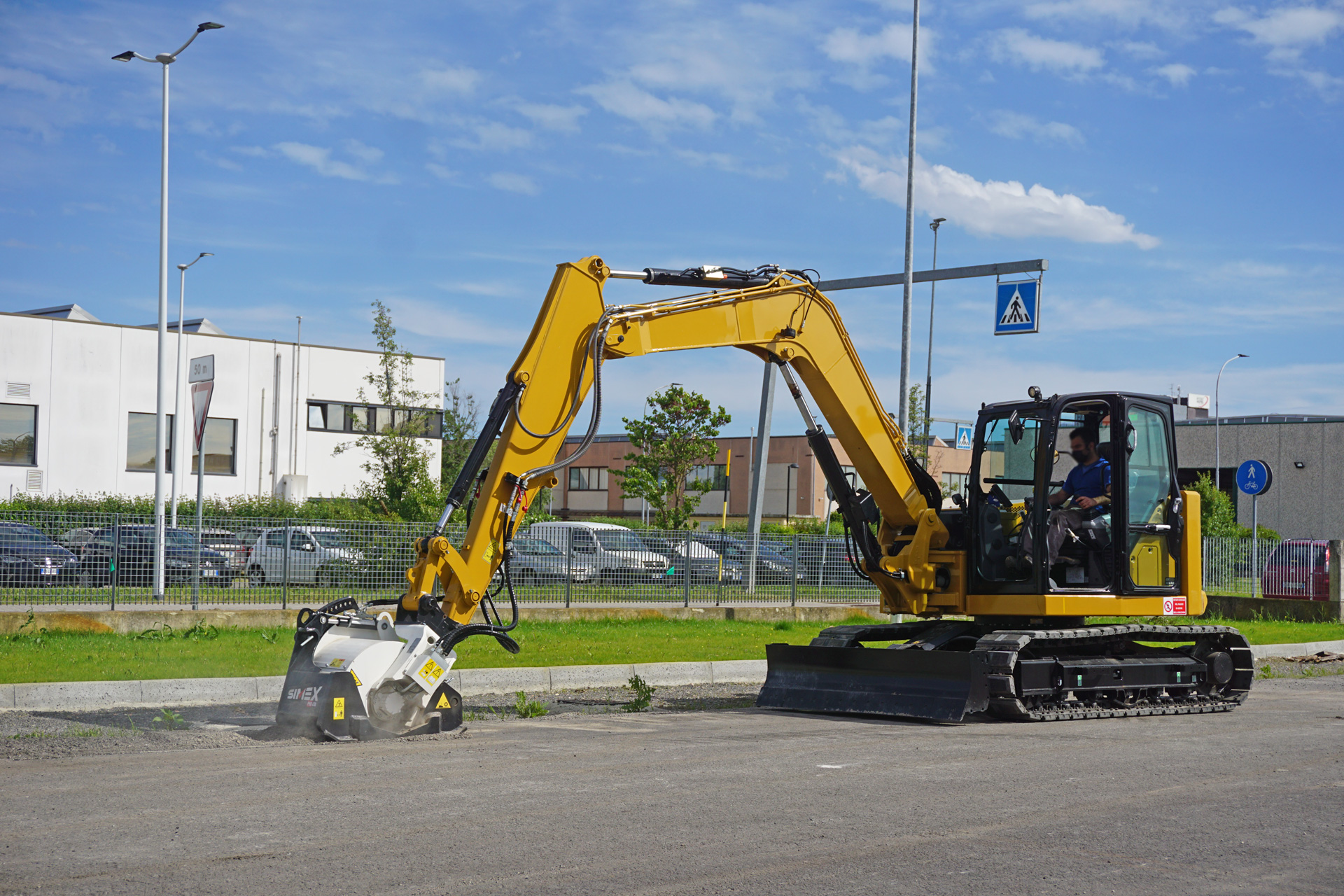
4 more models in the range equipped with conveyor belt, 2 specific models for soil stabilization, 4 extra models for special applications (milling under guardrails, milling at sides of rail tracks, creating rumble strips).
Thanks to constant investments in the R&D department, proven by numerous patents, and to a highly technological and robotic welding department, the components and the drums of the PL planers benefit from very high-quality standards, guaranteeing less wear and greater durability.
More than 70k planers sold thanks to a widespread and consolidated distribution network in more than 80 countries. Today with even faster delivery times thanks to a storage warehouse of over 7 thousand m² and a modern automated painting department. This is all complemented by a prompt customer and after-sales service with a consultative approach customer oriented.
Simex PLB and PHD planers for excavators
Simex has been at the forefront for years not only in the creation of cold planers for compact loaders but also for excavators and backhoes. 7 models for excavators from 2 to 22 tons, for widths from 200 to 600 mm, up to 200 mm depth. The PLB and PHD excavator planers can work on horizontal, vertical or sloped surfaces. Such as in vault planing in tunnels for creating tracks and recesses, to accommodate cables of various kinds or pipes. The planers for excavators ensure scarification depth and uniformity along the tunnel profile. Scarification depth and uniformity are ensured thanks to the swinging support pivoted on the same rotation axis of the milling drum, maintaining a perfect planing surface in any condition.
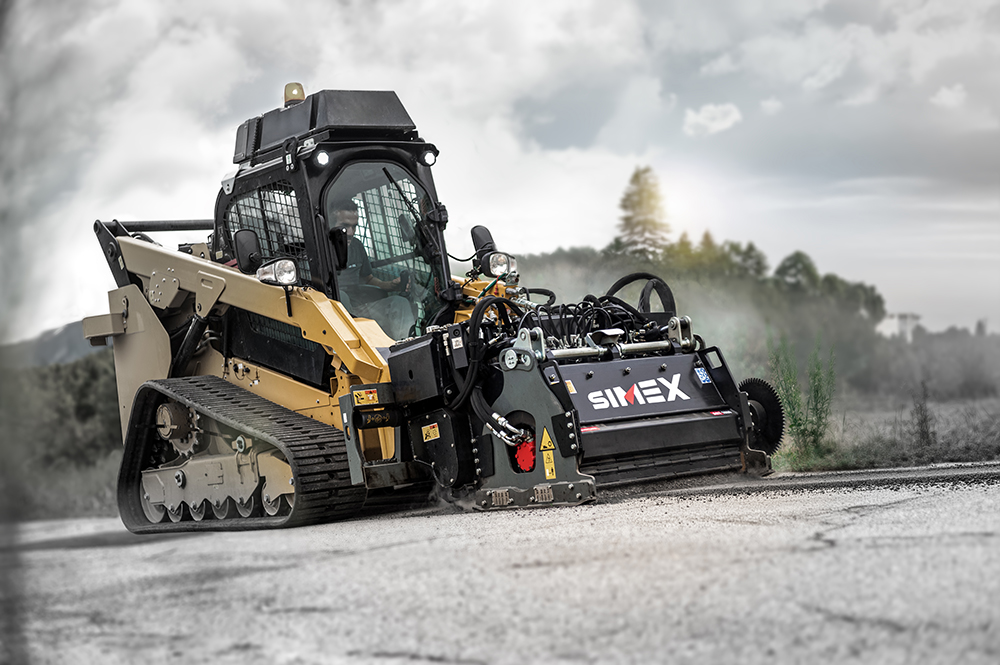
Simex ART 1000: technology for the on-site rehabilitation of wearing course through a cold regeneration process
Simex ART is an attachment for compact loaders (track loaders and skid steers), designed for the restoration of deteriorated road surfaces through a cold regeneration technology of the bituminous conglomerate. ART is a patented technology which reuses 100% of the material present on site without removing the milled material or adding other aggregates. It is used in functional road surface maintenance, up to 100 mm depth.
The equipment combines asphalt milling with particle size reduction and mixing of rejuvenators. It consists of two drums, the first for milling and mixing, the second for crushing and grain-size reduction.
In the work phase ART 1000 combines the following processes:
• Milling of the damaged road section
• Controlled injection of rejuvenators proportional to the working depth and the advancement speed of the operating machine
• Reduction of milled material to the correct grain size
• Final mixing to create the recycled conglomerate ready for reconstitution of the road surface
After being regenerated, the conglomerate is deposited directly inside the milling track and is ready to be leveled and compacted with a roller or vibrating plate.
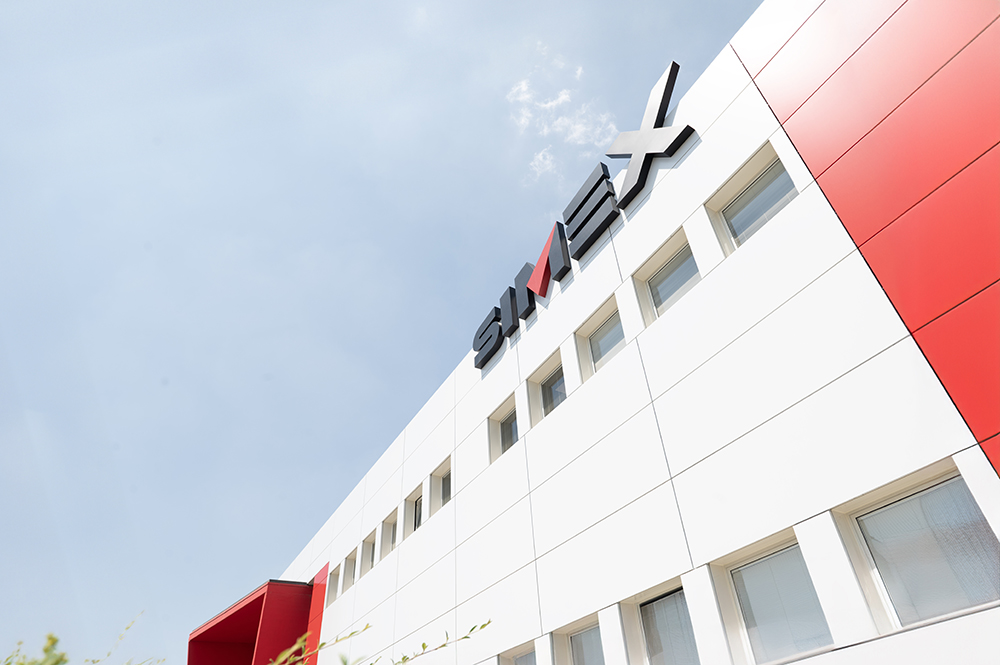
Operational advantages
• Restoration of road surface distress, quickly and with long-lasting results, which allows for adequate road maintenance planning.
• A dynamic and smaller construction site: no large machines are required, which significantly reduces traffic disruption. A reduced number of workers and a single vehicle (truck) which transports all the equipment on site.
• Money savings: zero costs for the procurement and transport of new mixes and virgin aggregates, in addition to not having to remove and dispose of the RAP.
• suitable for activity on surfaces of limited size.
Environmental advantages
• No impact: pre-existing materials are reused, recycling and rehabilitating aged bitumen. Technically, this operation can also be repeated in subsequent maintenance operations.
• Use of eco-friendly materials.
• No handling or management of special materials or waste.
• On site recycling ensures save of energy if compared to traditional laying of hot mixes.
For over thirty years alongside companies operating in the road maintenance and underground utilities sector.
Content produced in association with Simex


